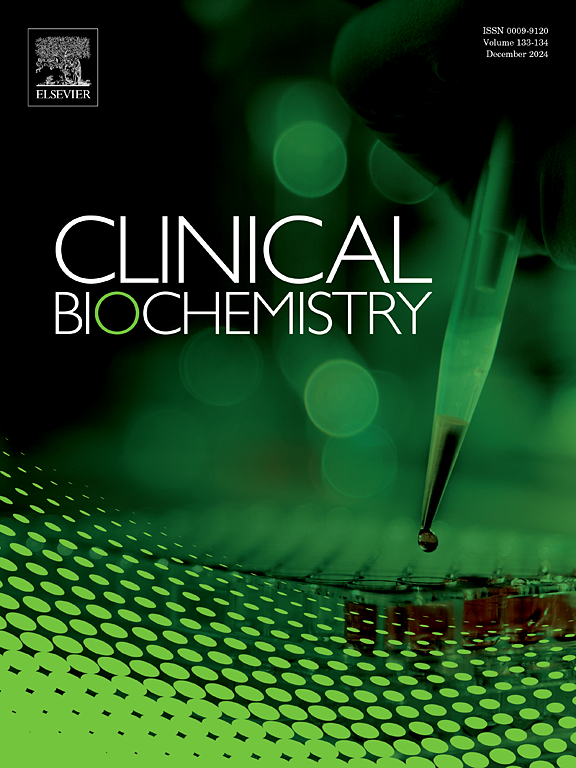Quantitative abnormalities in the β-region of the electrophoretic profile of serum proteins as predictive markers of monoclonality: Machine learning for monoclonality prediction
IF 2.5
3区 医学
Q2 MEDICAL LABORATORY TECHNOLOGY
引用次数: 0
Abstract
Objective of the study
To develop a machine learning algorithm aimed at predicting the presence of a monoclonal (M-) protein when the β-globulin fraction is elevated.
Materials and method
Patients were selected as part of the University Hospital Laboratory of Brussels routine diagnostic procedures from October 2021 to April 2022. Adult patients with serum protein electrophoresis showing elevated β1 and/or β2 fractions were included. The selection was done following strict exclusion criteria such as acute inflammation, iron deficiency anemia signs or supposed liver disease. To construct a predictive model for prediction of positive immunofixation (IFE) for monoclonality, the following factors were used: age, sex, β1 and β2 concentration (g/L), total proteins (g/L), IgA, IgM, IgG values (g/L) and hypogammaglobulinemia. The dataset underwent a random split, divided into a foundational training set (80%, 247 samples) and a foundational test set (20%, 62 samples). The training sets were subjected to five different algorithms: logistic regression, decision tree, random forest, gradient boosting, and support vector.
Results
309 patients were selected; 149 exhibited a negative IFE and 160 a positive IFE for monoclonality. The evaluation of the five tested models demonstrated very good performance, the chosen model was Random Forest for its high sensitivity (85%) and area under the receiver operating characteristic curve (91%).
Conclusion
An accurate algorithm was achieved for predicting the presence of M protein when the β-globulin fraction is elevated which enables early and improved diagnosis of monoclonal gammopathy.
求助全文
约1分钟内获得全文
求助全文
来源期刊

Clinical biochemistry
医学-医学实验技术
CiteScore
5.10
自引率
0.00%
发文量
151
审稿时长
25 days
期刊介绍:
Clinical Biochemistry publishes articles relating to clinical chemistry, molecular biology and genetics, therapeutic drug monitoring and toxicology, laboratory immunology and laboratory medicine in general, with the focus on analytical and clinical investigation of laboratory tests in humans used for diagnosis, prognosis, treatment and therapy, and monitoring of disease.
 求助内容:
求助内容: 应助结果提醒方式:
应助结果提醒方式:


